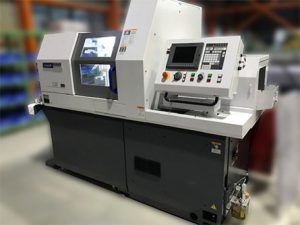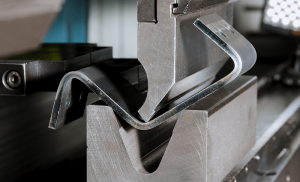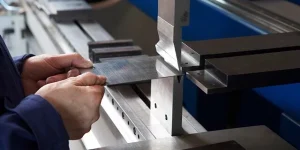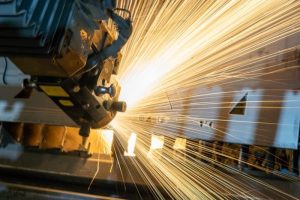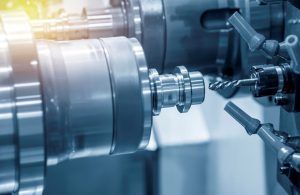CNC laser cutting offers high precision, fast speed, versatility, reduced waste, and high automation, enhancing production efficiency and quality
High precision and accuracy
CNC laser cutting machines are the most accurate machines used for cutting purposes. Generally, the typical error of the machine is ±0.1mm. The high precision that the CNC laser cutters can offer is widely valued in the aerospace, medical device manufacturing, and high-end electronic industries. CNC laser cutters utilize the cutting power of a laser beam controlled by a computer. Although the diameter of the beam is small and typically is about 0.1mm, the temperature of cutting materials is thousands of degrees, which allows for a precise cutting edge without damaging the surrounding area. Nowadays, thanks to the advanced feedback control, machines can automatically adjust most cutting parameters according to the feedback to get the best possible results from every cut.
Versatility
The machines can be used for cutting a wide range of different materials such as metals, various plastics, wood, and even some composites. As a result, they have various applications for different industries including, for example, automotive manufacturing and electronics. Cars can be produced with the help of laser cutters that cut different steel or aluminum alloy sheets and speed up production. In the electronics industry, laser cutters are especially versatile and can cut flexible circuits or plastic casing covering circuit boards.
Efficiency
The cutting speed is very high and is definitely one of the important and essential features of the CNC laser cutting machines. High-power laser cutters can easily cut several meters of metal sheet in a minute. The highest possible cutting speed is especially valuable in the case of mass production when the workloads are high and rapid processing is essential. In addition, high efficiency results in cost-effective production.
Cost-effective
The initial cost of the CNC laser cutting machines is rather high; however, the cost of operation is relatively low. There are no costs for the production of the laser cutters’ cutting tools, and the cost of maintenance is considerably low as machines do not require much maintenance work due to the highly precise technological process that does not entail any unexpected failures detections. Moreover, the precision and efficiency of laser cutting make the process highly cost-effective as cutting error is minimal and almost no material scraps are produced.
Automation
One of the most essential advantages of modern CNC machines is their ability to be attached and connected to and with the production line automation systems. In some cases, machines can be used in fully automatic mode. For instance, the cutting path from the CAD drawing can be automatically and directly transferred to the laser cutter, which eliminates the requirement for additional tooling changes for different kinds of parts. In automats, machines replace the workers, which exclude work-related errors.
Environmentally-friendly
Laser cutting offers a rather environmentally-friendly way of material processing. Laser cutting produces less waste and fewer pollutants than mechanical cutting of the materials. In addition, the modern machines are equipped with efficient fume extraction systems and do not pose any environmental threat.
Safety
Finally, smooth running is ensured by a variety of machine safety features including proper safeguarding and light curtain devices that prevent the laser cutter from starting in case of human hands and counterparts being in the active forming area. In addition, the cutter immediately stops working in case of any malfunctions.
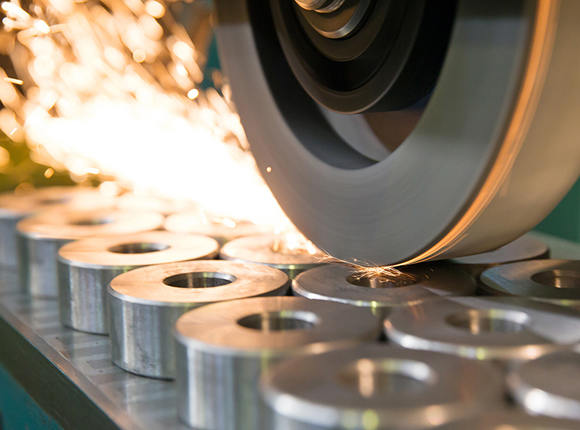
Faster cutting speed
The most striking advantage of CNC laser cutting machines is the incredibly high cutting speed, which significantly improves production efficiency. For example, a high-power laser cutter can cut up to 20 meters of stainless steel per minute, a speed that cannot be matched by traditional cutting methods. The high cutting efficiency of the laser is mainly based on the unique principle of laser technology. The laser beam can focus energy with high speed and high precision, quickly melting the material and cutting through it. In contrast, traditional mechanical cutting processes are not only slower but also rougher, with considerable burrs. This not only increases the time and cost of later processing but also affects the use of the product. In practice, the speed of the laser cutting machine is fully reflected. In the automotive industry, several CNC laser cutting machines used to cut body parts for a few minutes, compared to more than an hour when traditional cutting methods are adopted. With this high-speed cutting capability, mass production is possible, and product delivery times can be reduced several times. The speed advantage of CNC laser cutting machines is also reflected not only in cutting but also in the overall optimization of the construction process.
Laser cutting machines can be seamlessly inserted into a streamlined automated product line with virtually only a slight amount of pre-programming, creating a wave of prefabricated, assembled, and modular transition from finished product to design. Therefore, the degree of automation of the production line can be raised greatly. The high-speed cutting performance of CNC laser cutting machines can be transformed into production efficiency, mainly reflected in the improved production process capability. The high cutting speed is not only conducive to the fast cutting of a single part for mass production but also can process a large number of parts in the specified time.
Precision and Reduced Material Waste
- Faster cutting speeds do not mean lower precision. CNC laser cutters provide high precision even at high speeds, ensuring clean cuts and minimum material waste. The precision made possible by this technology also reduces the need for additional finishing processes. As such, manufacturers also save time and more on extra processes.
Cost Savings
- Cutting also becomes less expensive as CNC laser cutting is not only fast but also very efficient. Speed and efficiency are the biggest advantages of CNC laser cutting, as both the cutting process itself and the subsequent finishing steps are significantly faster and cheaper. Furthermore, less material is wasted so manufacturers save on more than one front. Maintenance is also needed less frequently and tools do not need to be replaced as often.
Versatility in Applications
- These cutting speeds also make CNC laser cutting suitable for a wide variety of applications. Manufacturers can produce anything from small, delicate, complex parts, and decorative pieces to industrial parts and even larger components. As such, CNC laser cutters are used in industries such as automotive, aerospace, and electronics, among others.
Improved Turnaround Times
- Given that CNC laser cutters are perfectly equipped to handle a wide range of applications, their cutting speeds greatly reduce turnaround times. Manufacturers can also guarantee rapid and timely production. This is a crucial advantage in today’s fast-paced market, as companies need to respond to market changes quickly. As such, shorter turnaround times give manufacturers a significant competitive edge.
Integration with Advanced Software
- With modern technology, CNC laser cutters are also equipped with advanced software that optimizes the cutting path and cutting speeds. This ensures that the machines operate with maximum efficiency, allowing them to truly minimize setup and programming time.
Environmental Benefits
- Faster cutting times mean that less energy is used for the cutting of every single part. Furthermore, the precision of the process also allows for very little material waste in manufacturing. Both of these advantages make CNC laser cutting one of the most environmentally beneficial technologies in manufacturing.
CNC laser cutters are very useful, as they offer high power and a high degree of control over what is being cut. They are also safe, though, much safer than you might expect given the speed at which they operate, as they feature protective enclosures and often use high-speed operations, meaning that they will be forced to automatically shut off after completing any particular operation. Thus, there is no reason not to use them, as they provide rapid production that does not place the worker in danger.
Reduce material waste
The main advantage of CNC laser cutting machines is a very low amount of material waste due to their precision and efficiency. Other cutting methods usually produce vast amounts of scrap and leftover material, but laser cutting technology drastically reduces this waste. Laser cutters are able to achieve a minimal kerf width — typically, their cut is only about 0.1 mm wide. Moreover, due to the cutting’s precision, the edges of any part cut by a laser are always smooth, which eliminates the need for trimming or grinding. Less waste, obviously, results in lower costs — let alone time and materials saved on the final processing of the part. According to Scoby , CNC laser cutting can save up to 20-30% of material waste in metalworking, which, in its turn, leads to lower production costs.
Moreover, by programming, laser cutting machines can optimize the material’s layout on each sheet. This process is normally performed with CAD software, which can precisely calculate the destination and the path of the cut for each part, minimizing waste gaps between them. With such optimization, the material usage efficiency rises above 95%, leading to even lower production costs.
The high levels of precision play a key role in saving raw materials. When the error margin of the cut is ±0.1 mm, a CNC laser cutter is able to waste raw materials only where absolutely necessary. Moreover, the efficiency of nesting is increased by the use of efficient nesting software, which today comes with all modern CNC laser cutting devices, such as a system fabricated by Menacho.
Benefits of material:
Thin kerf
- Laser cutting produces very thin kerf. Kerf is the width of the material that is removed by the cut. A typical kerf used in laser cutting is about 0.1mm. On the other hand, traditional cutting methods produce a kerf wide enough to measure in millimeters. When less material is turned into waste and more of the original sheet can be used for final parts. When the relation between the cut width and the inflatable cost of the project is decreased, the project cost is reduced.
No need for secondary processing
- By laser cutting, clean burr-free edges are produced so that only a small amount of material is removed afterwards by stamping or bending; material is saved. Unlike laser cutting, cutting of materials such as brass requires a secondary process such as sanding or grinding to convert the part into final form. Not only is this secondary process wasting material, but it is also producing highly toxic waste. The noxious and difficult material is returned to the lean back of the manufacturing company.
Optimise use of materials
- Minimize material waste when nesting parts. Laser cutting can make the kerf very thin, so small holes and small details can be fabricated with parts placed close to maximize use of the sheet. Some designs are just too expensive to use with traditional cutting methods, or nesting is simply impossible. In this case, it is better to cut each part with a separate order, such as in a CNC laser cutting.
High quality parts
- Tolerances are just around +/-0.1mm and holes and slots can be placed close to their respective perimeter. This means parts of laser-cut projects fit perfectly, eliminating gaps between parts which such gaps are compensated by little, miniature parts in order increase cost of the parts. And when the project and design are not missing parts, the designer should not return the next week with fingers on prices.
Benefits for the environment
- Reducing material waste has a fairly simple but very powerful environmental impact: while saving costs, waste production is significantly reduced as well. This is an obvious benefit of any project. In addition, fewer raw materials are used, so less garbage and waste at the root stage of the project are reduced. In addition, the preciseness of the cut reduces the need for disposal of hazardous waste that must be sharply eliminated after decades.
Cost efficiency
The cutting laser processing results in lower wasting of materials, which in turn reduces the costs associated with their purchase. Moreover, cutting with a laser system decreases the time required for the production of goods, which will result in lower costs of labor. The expenses that a company saves can be relocated to the areas of innovation and research.
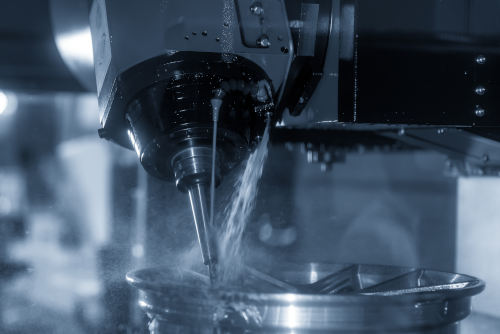
Clean and high-quality cuts
CNC laser cutting machines are widely recognized for the outstanding- quality and clean cutting results. Usually, it is due to the minimal heat affected zone, which is less than 0.5 mm, and it lets the material not to be deformed and damaged due to the heat. It is especially essential for the industries, which require precision, such as aerospace or medical device manufacturing. It is achieved by the use of a high energy laser beam, which is likely to melt or vaporize the material of the metal sheet. Then the blowing of the hot vapors of the material is also realized by the high pressure of gas. Since there is no interactions with the materials, no burrs are formed on the edges of the sheet metal, and edges are neat and do not require post-processing.
There are several advantages of CNC laser cutting, including the low formation of burrs. It is likely to occur due to the fact that precision of the equipment, and there is no necessity to remove burrs from the sheet. Therefore, it could be considered one of the advantages of the technique, as it is equally high for both side, unlike other cutting equipment. One of the essential benefits of this type of cutting machines is the high repeatability of produces results. It means that the parts could be produced in uniform amounts, and each cut has been identical. Most often this feature is essential in mass production, and it is ensured by the precision of the equipment. Another advantage is that the use of the equipment lets the production cut fine details either. Therefore, samples could be used in making jewelry and electronics.
Reduced thermal distortion
Laser cutting generates minimal heat and reduces the risk of thermal distortion occurring in the material. Especially in the case of thin materials or materials which might be heat-sensitive, such as some types of plastic or composites, this aspect is key as it ensures that the focus of the cut remains intact. Smooth surface finish
The CNC laser cutters produced high-quality, detailed cuts and ensured a smooth surface finish in most cases. The need for further finishing was reduced as in laser cutting, the radiation melts the material rather than mechanically cutting it. This advantage becomes particularly important in the cases where the surface finish of the product is critical, such as in the case of display components or precision instruments. Versatility in material thickness
CNC laser cutting machines can be used on a variety of materials and thicknesses, varying between a few micrometers to 25 mm or more. Thinner and thicker materials can also be cut with less complex equipment, which means that the manufacturer usually does not need to purchase different cutting tools. This, in turn, enables the use of the same CNC laser cutting machine for different projects, increasing flexibility and productivity since the machine can be used at all times for this purpose. Consistent edge quality
The quality of the edges in the parts produced by CNC laser cutters tends to be very high and varies little from one cut to another. The precision of these cuts reduces the need for additional reworks when the parts are to be assembled as they will fit perfectly together. The same precision may add to the aesthetic of the product, which is important in the case of consumer goods or high-end applications.
Environmental benefits
Thanks to the clean cuts, which CNC laser cutters produce, working process in the facility becomes cleaner. Not much dust and residues are produced by the technology, which makes it unnecessary to spend much time, money and other resources on cleaning and maintenance. Moreover, due to precise cuts, there is less waste produced with materials.
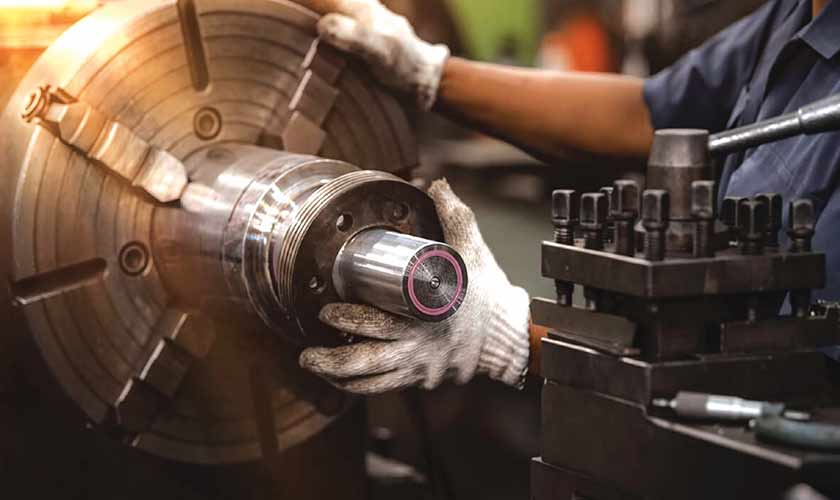
Diverse material compatibility
One of the well-established characteristics of CNC laser cutting machines is their extensive material compatibility. Besides the possibility to efficiently cut numerous materials, from metals to non-metals, even those that are challenging for conventional methods, many applications require cutting or processing varied materials within one product or structure. The information on material compatibility provided below reflects the wide application of this cutting method across industries.
Metals
CNC laser cutting machines can cut a variety of metals, including steel, stainless steel, aluminum, copper, and brass. For instance, stainless steel sheets from 0.5 mm to 30 mm in thickness can be effectively managed with the technique. In addition to impeccable cuts, other benefits include the maintenance of smooth edges, thus taking away the necessity to smooth or mill the cutted part.
Plastics
Laser cutting handles plastic materials with precision and speed, as is the case with acrylic, polycarbonate, polyethylene, and PVC. The typical thickness for laser cutting acrylic is from 0.5 mm to 25 mm. The machine produces perfectly clear edges, without the need to polish or treat further, which is why it is commonly used to make advertising signs and display stands.
Composites
Laser cutting of composite materials, such as carbon fiber reinforced plastics or glass fiber reinforced plastics , benefits from cutting thickness up to 10 mm again with clean edges. This is frequently used in such industries as aerospace and automobile.
Woods
Laser cutting of plywood, hardwoods, or softwoods up to 20 mm maintains uniformity and clean, smooth cuts that do not require sanding. The material is commonly used in woodcrafts and furniture making.
Textiles and fabrics
Laser cutting of textiles, such as cotton, silk, polyester, or nylon at a typical thickness of 0.1 mm to 5 mm, produces finished products with neat edges that do not fray. The use of the method is profound in fashion and garment manufacturing.
Ceramics
Despite being a brittle material, certain types of ceramics can also be laser cut up to a thickness of 0.5 mm to 10 mmases. The product is frequently used in the production of electronic parts or medical devices.
Glass
Although challenging to cut, even glass is disabled to be accurately handled by CNC laser cutting machines at a typical thickness of 0.5 mm to 15 mm. Furthermore, it is applicable for more special types of glass, for example, for making optical components that require the highest level of precision.
Mixed materials
Finally, it is likely to cut material combinations that include more than one material in one product or structure, e.g., metal with plastic. We regularly come across this combination in casings for all sorts of electronics or complex mechanical parts.


